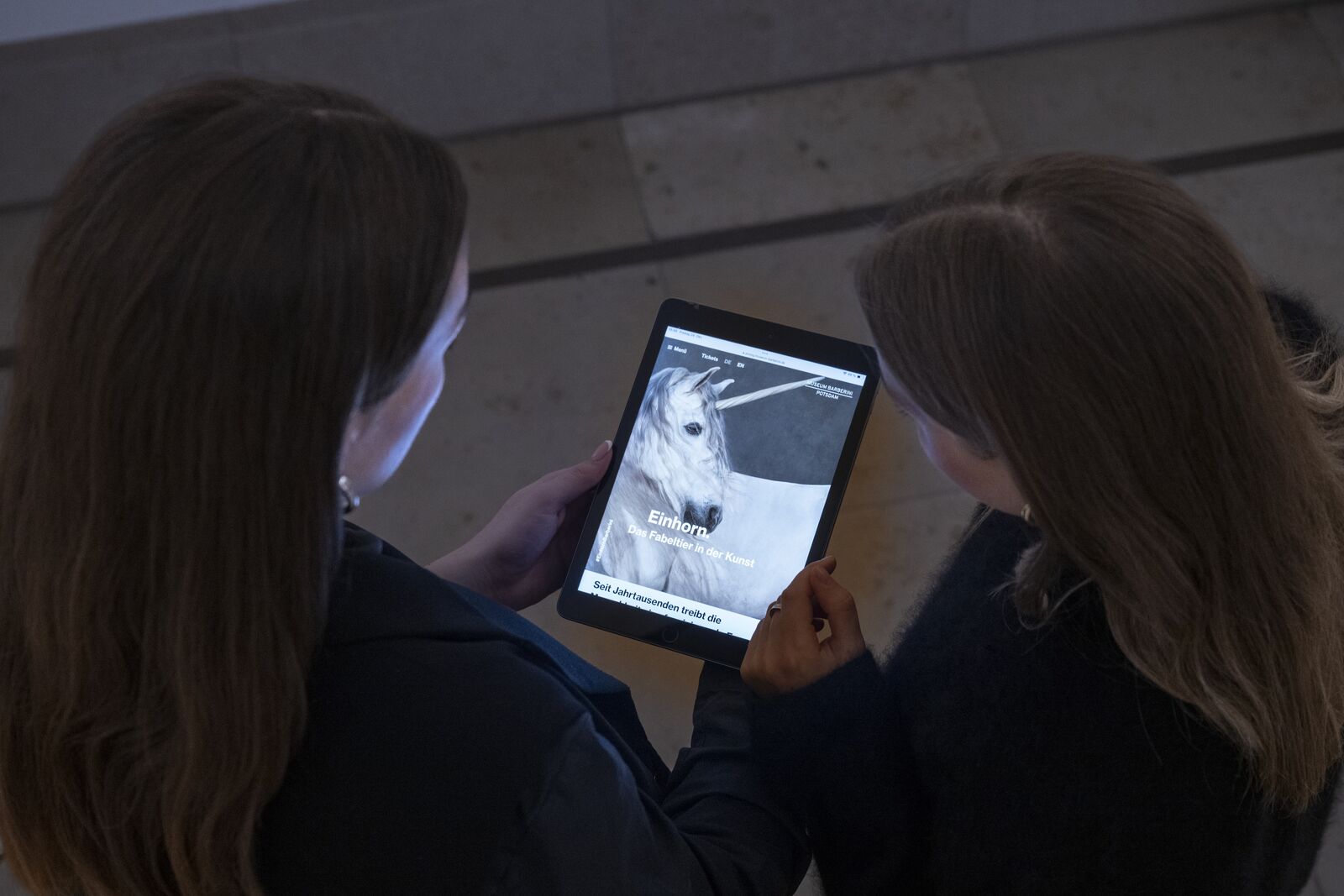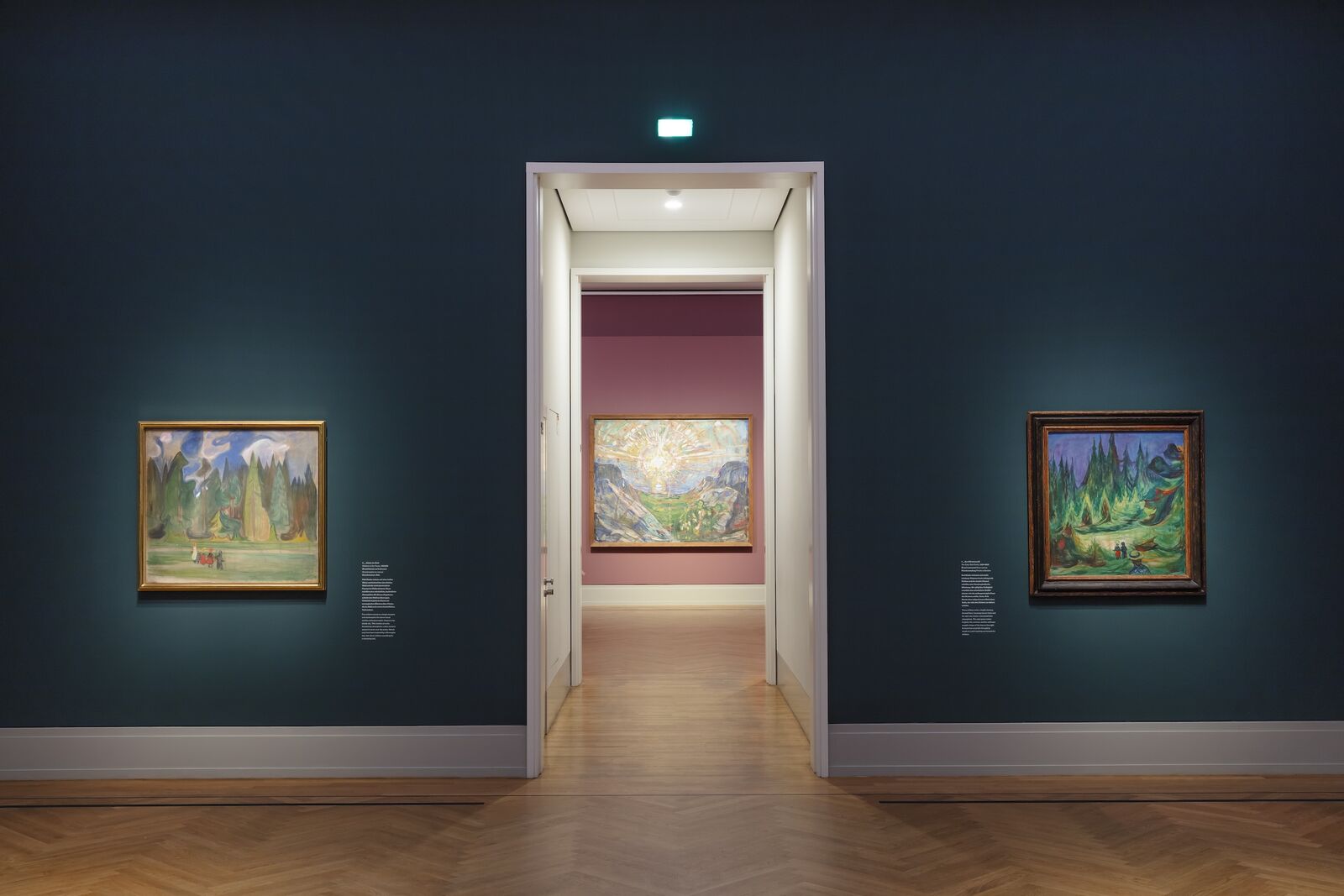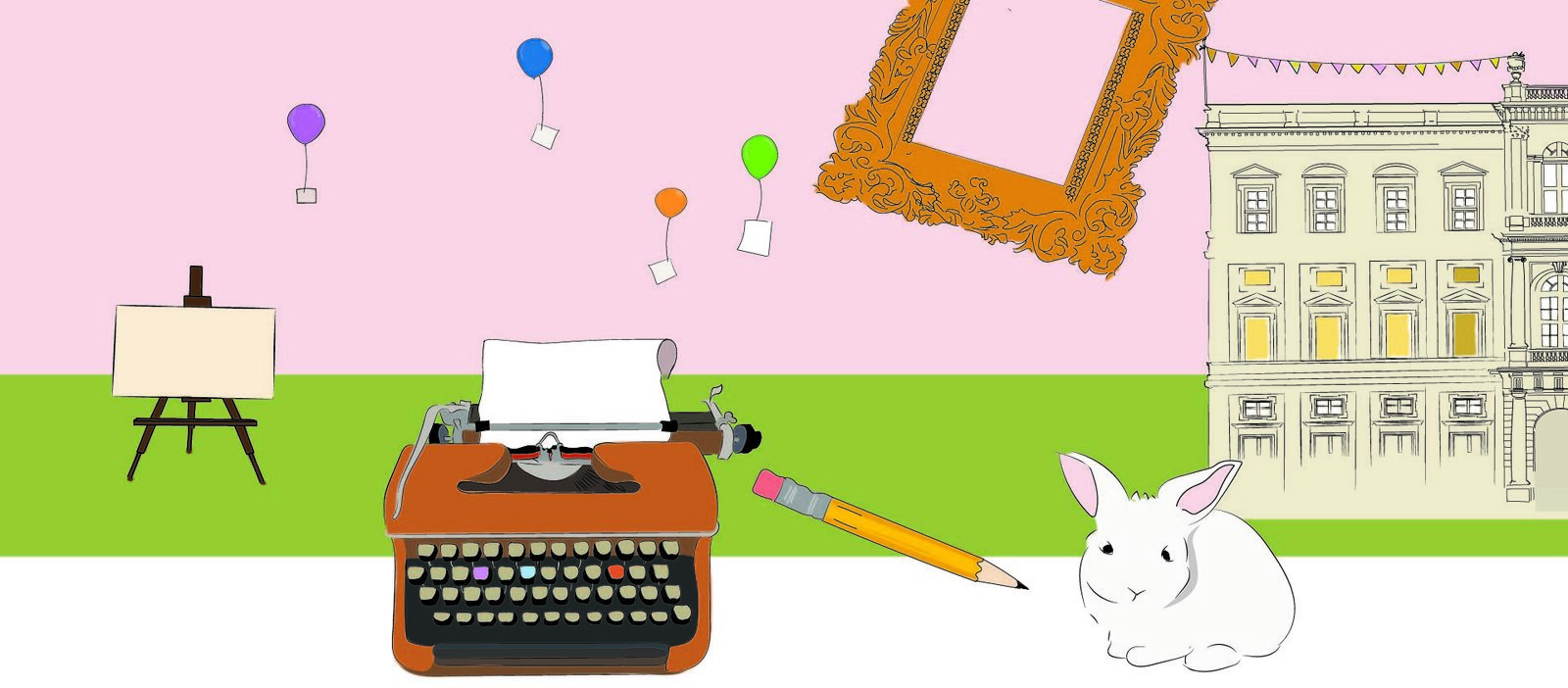
Edvard Munch: Trembling Earth
Edvard Munch's art is known for its vivid depictions of deeply human feelings. However, his fascination with nature plays an equally important role in his art and was being addressed for the first time in an exhibition. Edvard Munch: Trembling Earth investigated the meaning of such images in Munch’s oeuvre, questioning common assumptions and examining the contemporaneous artistic, scientific, and philosophical influences that contributed to his understanding of nature.
While Edvard Munch viewed nature as a cyclically self-renewing power, he also saw it as a mirror of human emotions. His interest in the psychological dimensions of existence, however, was matched by an equally strong fascination with nature. Employing his unique sensibility and power of imagination, Munch explored motifs taken from nature, seeking to fathom humanity’s place in the cosmic cycle of life. Munch developed a pantheistic understanding of nature, which he projected onto the forests and coasts of Norway. With motifs ranging from undulating coastlines and fairytale forests to snow-covered or stormy landscapes, luxuriant gardens, and the exuberant play of sun, air, and water, Munch’s work also resonated with the present-day climate crisis against the backdrop of current natural catastrophes.
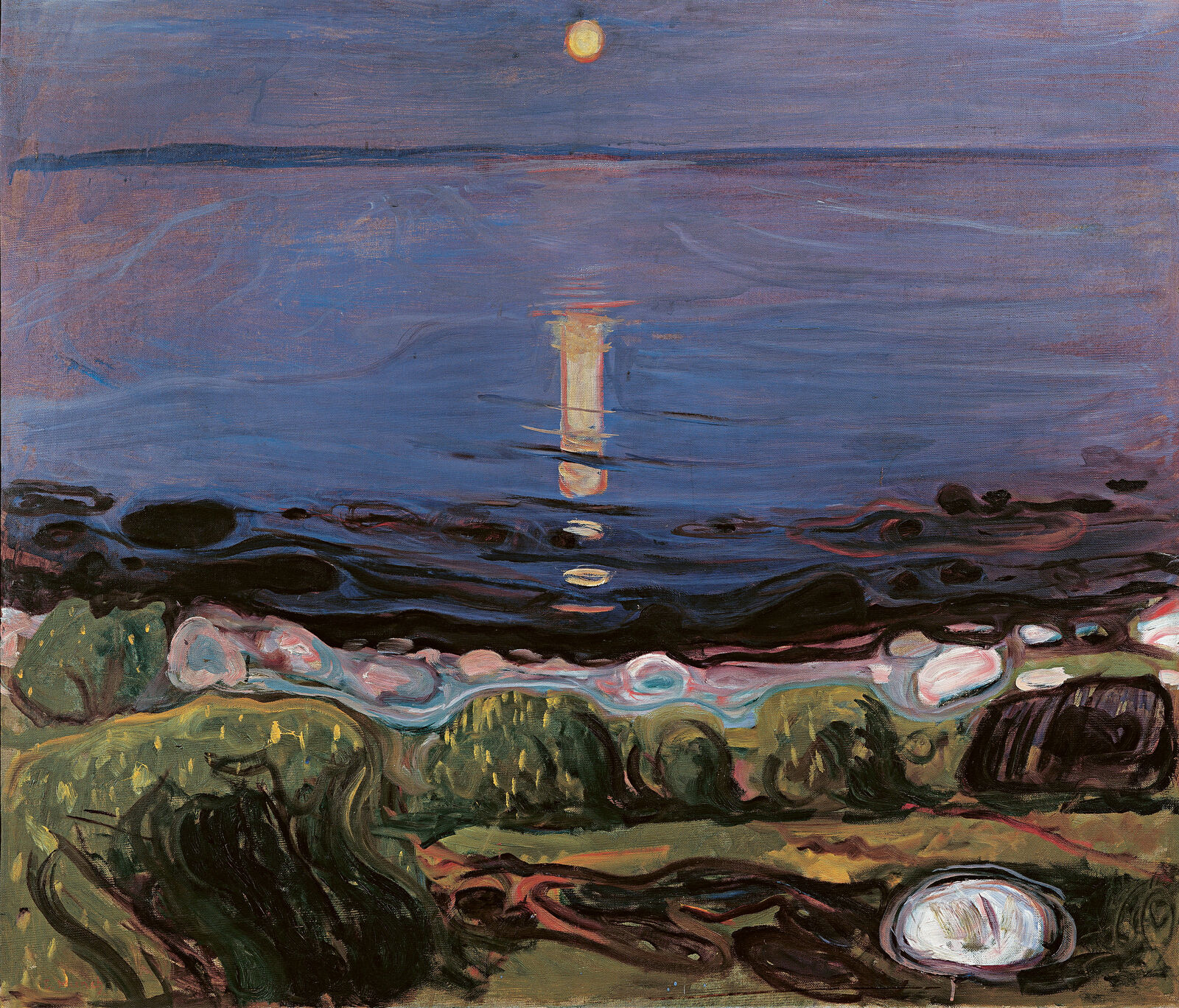
Private Collection
Edvard Munch: Summer Night by the Beach, 1902/03
In Edvard Munch's time, the understanding of nature changed radically. Under the impact of new discoveries in biology, physics, medicine and geology, nature was no longer perceived as something static and tangible, but as something dynamic that is constantly in motion. People developed an awareness of processes that are invisible to the naked eye - be they slow changes of great magnitude such as continental drift and the evolution of species, or the teeming of bacteria visible only under a microscope. The boundaries between humans and animals, between plants and minerals, shifted, blurred and were partly abolished.

Munchmuseet, Oslo
Edvard Munch: The Yellow Log, 1912

Private Collection
Edvard Munch: Stormy Landscape, 1902-03
In many works Edvard Munch put this lively, dynamic and changing nature into the picture. Thunderstorms, human interventions in nature are just as pictorial themes as moving earth masses with humanized features. Intertwined bodies unite with the earth. In some pictures Munch let man and woman float weightlessly through space. In a text he described this subject thus: "The fates of men are like the planets; they meet in space, only to disappear again at once." In this way, the artist related man's drives and desires to cyclical, universal forces.
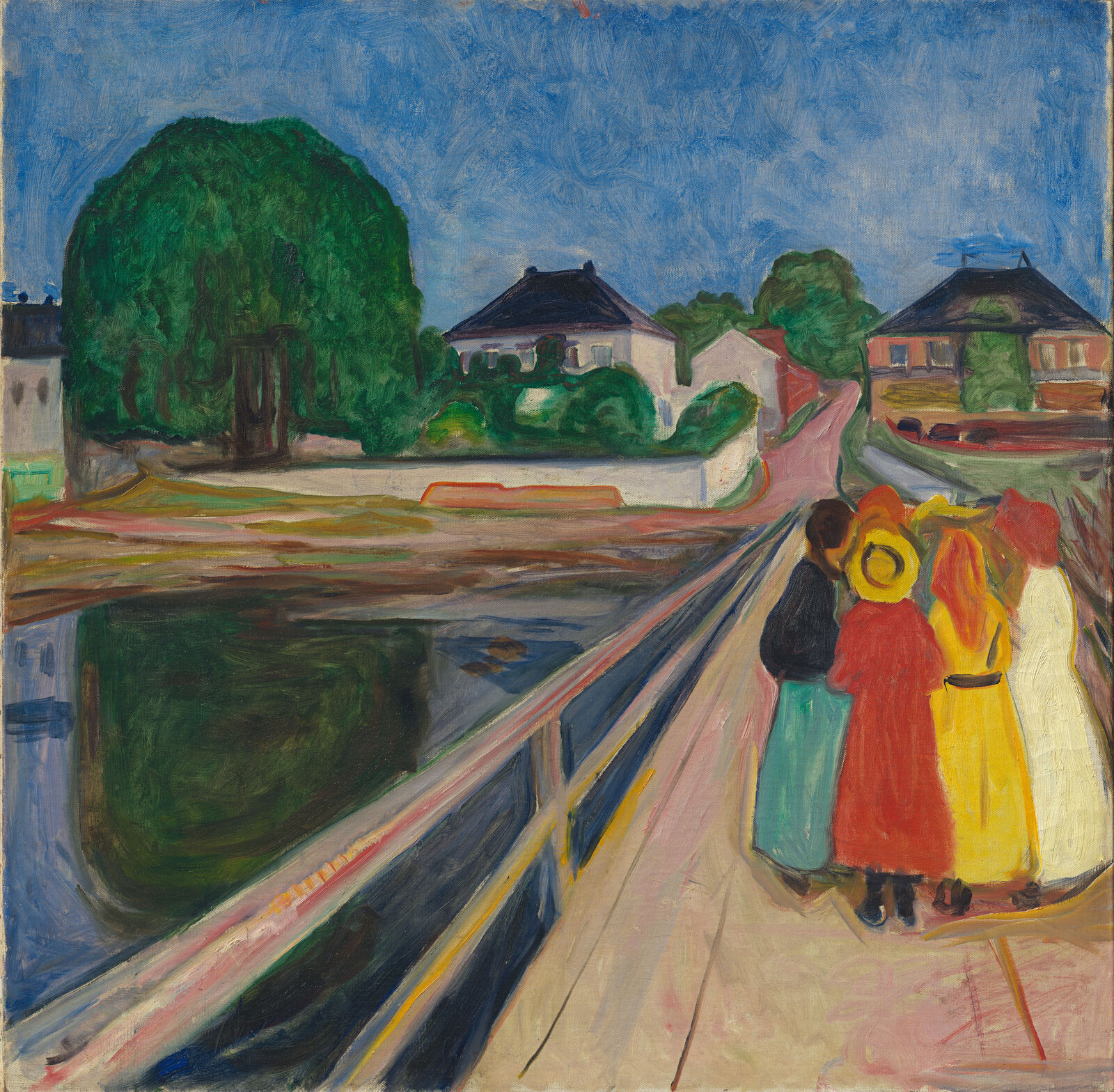
Private Collection
Edvard Munch: The Girls on the Bridge, 1902
The exhibition brought together more than 110 loans from institutions including the Munchmuseet, Oslo, the Museum of Modern Art, New York, the Dallas Museum of Art, the Staatsgalerie Stuttgart, the Museum Folkwang, Essen, and the Von der Heydt-Museum, Wuppertal.
Edvard Munch: Trembling Earth was co-organized by the Clark Art Institute, Williamstown, Massachusetts; the Museum Barberini, Potsdam, Germany; and Munchmuseet, Oslo, Norway.

Munchmuseet, Oslo
Edvard Munch: The Sun, 1910-13
For the duration of the exhibition, the Museum Barberini extended its opening hours: From Wednesday to Sunday, the museum is already opened from 9 am.
From September 15, 2023 to January 22, 2024, the Berlinische Galerie presented the exhibition Edvard Munch. Magic of the North. Both exhibitions were under the joint patronage of German President Frank-Walter Steinmeier and His Majesty King Harald V of Norway.
View of the exhibition
Reading, Hearing, Viewing
Media partners
ARTE
Tagesspiegel
Potsdamer Neueste Nachrichten
Exberliner
radioeins
rbb Kultur
tip Berlin
Yorck Kino








